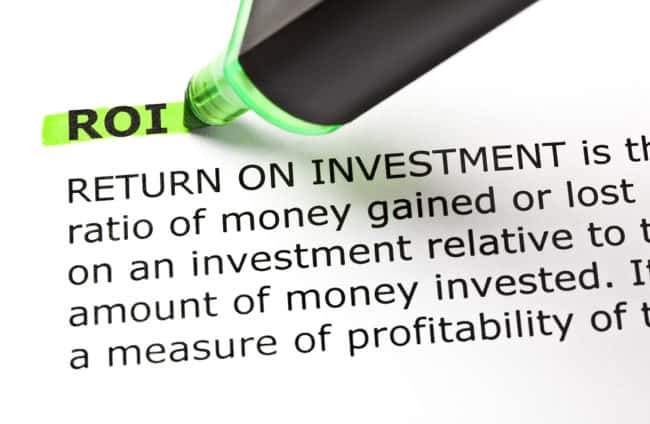Sometimes Voice of the Customer (VoC) practitioners frustrate me. In this recent research, customer feedback professionals identified that their biggest barriers to a more effective customer feedback process were engaging staff and management and understanding loyalty drivers.
But when asked what they would do with an unlimited budget the most common response, by far, was “collect more data”. Unbelievably, coming in 6th, and last, place was “make more changes to the business.”
These are the same people who complain about management not caring about or investing in VoC. The issue is that they themselves are the ones perpetuating the myth that customer feedback is nothing but data collection. They talk about increased sample sizes instead of the business value that informed change is bringing to the organisation.
Have you ever meet a sales person who didn’t know how many orders they’d made this month, how many more were needed to meet budget and the total annual sales they are delivering? Of course not. A sales person that doesn’t know the value they are generating doesn’t last long.
Marketers Demonstrate ROI – So Should We
Interestingly, 10 years ago it was Marketers in the same situation, always complaining that they were the first ones to have their budget cut; frustrated because senior management didn’t take them seriously or fully appreciate the value they were bringing to the business.
But then marketers got smart.
They realised that if you want to be taken seriously you have to bring dollars to the table. You have to be able to show directly how investment in your area turns into profit.
Sure it was hard to do. If you have ever tried to attribute TV or Outdoor advertising to sales you’ll know just how hard; but do it they did.
We customer feedback specialists must also get smart. We must start being specific about the return we are generating for the company.
Yes it can be difficult to calculate the exact ROI for customer feedback but to get long-term management attention and support it has to be done.
Remember, no one in management cares about sample sizes so there is no point discussing them. Everyone in management cares about revenue, costs and profit so that must be the basis for every customer feedback discussion.
Like the Marketers, calculating the ROI of customer feedback will take some effort and is not something that can be done overnight; first the right foundations must be built.
The Road to ROI
Pre-Implementation: Proving ROI Pre-Launch
Demonstrating the ROI of VoC prior to actually starting so you can secure a launch budget is particularly difficult. There is no way to really know what improvements will be found so no way to determine what the ROI might be.
The best (only) way to do this is via case studies of what other organisations have achieved. Finding case studies with numbers that you can quote is tough so we’ve put together a summary of Net Promoter® case studies and success data that can be used as part of the justification.
Once the program is launched however, the focus must be on numbers that are real for the company.
Start with the Business Outcome
Remember that our goal in collecting customer feedback is not to increase the customer feedback score; it is to generate business value, so start there.
Every (commercial) business is different but when you boil it down there are only three levers to drive business success:
- Increase sales
- Increase customer retention
- Decrease costs
The existing feedback survey probably collects an Outcome Score such as Net Promoter Score® or Customer Satisfaction or maybe even Customer Effort Score (not that I recommend that last one). If it doesn’t it should.
Before you do anything else you must be able to link changes in customer feedback scores with changes on one or more of those business levers. We must know how changes in that score correlate with changes in important business outcomes. If we don’t then we have no hope of proving the ROI of the process.
Look at these statements from real companies (numbers changed to protect confidentiality but otherwise real); each links changes in feedback scores to business value: the R in ROI:
- A one point increase in “Would Recommend” score decreases the risk of termination by 7.8%
- Changes in NPS® account for 47.5% of changes in retention rates
- Promoters purchase 1.45 times as much as Detractors.
Do you have a similar version for your business? No? Then you should get one.
Design and Implement Changes to the Business
Lots of assumptions here, but if the right customer feedback has been collected in the right way it will be possible to identify what is driving the customer feedback score and link them together. Making changes in these driver variables is the key to improving scores and eventually business results.
There is not a lot more detail I can add here as every company is different and the driver map is different as well.
However, once we know what drives the score (and business outcomes), then it’s time to make changes to the business. Those changes will cost time and/or money. This is the “I” in the ROI calculation.
Strategise How to Measure Incremental Value
Before launching into the change take some time to design a way to prove the value that the change is generating.
Note that you need to set the measurement process up before you make the change. If you don’t then you will have real difficulty in proving your case.
Marketers have also struggled with this over the years so let’s take a leaf out of their book and use one of two most common approaches they use:
Control Groups
Here the change is applied to a group of customers while the rest of the customers continue to receive the existing treatment. By comparing the performance (customer feedback) between the two groups it is possible to clearly show the impact of the change on the customer feedback score and therefore the value generated.
A/B testing approaches use the same technique.
Practically speaking this can be simple to achieve:
- Change the scripting in one part of the contact centre
- Train only a section of the service staff in the changed process
- Deliver the updated documentation to a section of customers.
After the change track customer feedback for both groups and compare them to determine the impact of the change.
Of course it’s not always easy to apply control groups but start here because it is the most robust (hardest to argue against) way to demonstrate the incremental impact of the change.
Before and After
Another way is to use a before and after approach. Customer feedback is measured before and after the change. The difference between the two data sets (increase or decrease in customer satisfaction) is assumed to be the result of the change.
This approach is not as robust as the control group approach because the difference might be due to other factors that occurred at a similar time but were not part of the change in design. It is however, better than nothing.
Report Business Value Generated
Now that the work is done you can reap the kudos of reporting the business value generated from customer feedback. With the right data it is now easy to show the ROI of not just the individual change but also the overall VoC business function.
At this point it is critical to report not just in customer feedback terms but also the business value terms. To report changes in Net Promoter without also including a calculation of the value generated by the process is to sell the entire customer feedback program short. Don’t let that happen.
Too Much Effort?
This may all seem like a lot of effort when you and I just “know” that customer feedback generates value for the business. We may even be correct, but that same research above showed clearly that customer feedback specialists have a significantly higher opinion of the success of customer feedback programs than the rest of the company.
Put another way, the rest of the organisation is sceptical that customer feedback works. If we as VoC practitioners don’t validate and re-validate the value generated in tangible business terms that opinion will stick and it will continue to be difficult to convince management to commit funds and resources to customer feedback.












